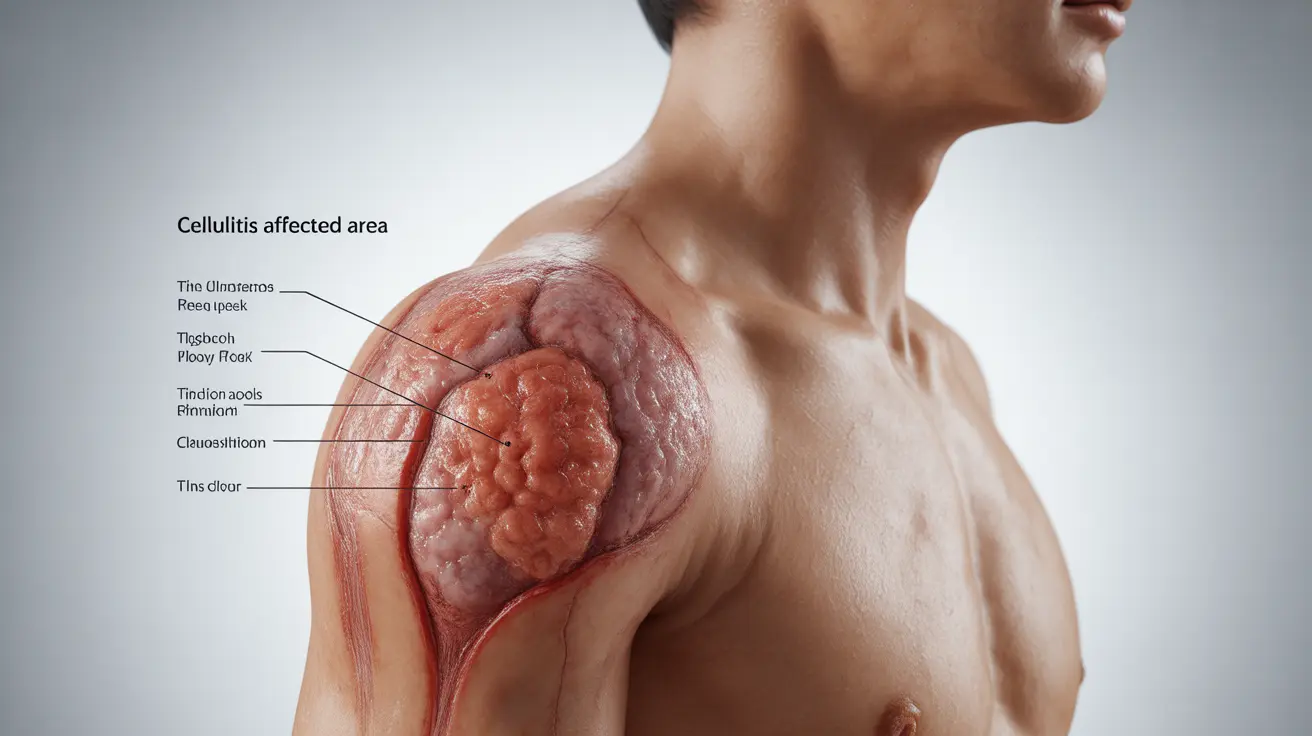Cellulitis is a serious bacterial skin infection that requires prompt medical attention. This potentially dangerous condition occurs when bacteria enter through breaks in the skin, causing inflammation that can spread rapidly if left untreated. Understanding its signs, symptoms, and treatment options is crucial for preventing complications and ensuring quick recovery.
While cellulitis can affect anyone, certain factors increase your risk, and knowing when to seek medical care can make a significant difference in your treatment outcome. This comprehensive guide will help you understand everything you need to know about cellulitis, from early warning signs to prevention strategies.
Early Signs and Symptoms of Cellulitis
Recognizing cellulitis early is crucial for effective treatment. The most common signs include:
- Redness and warmth in the affected area
- Swelling and tenderness
- Skin that appears stretched or glossy
- Pain or soreness when touching the infected area
- Fever and chills in some cases
The infection typically develops on the lower legs, though it can occur anywhere on the body. The affected area often feels warmer than surrounding skin and may expand rapidly over hours or days.
Understanding the Causes and Risk Factors
Cellulitis occurs when bacteria, most commonly streptococcus or staphylococcus, enter through breaks in the skin. Several factors can increase your risk of developing cellulitis:
- Cuts, scrapes, or other skin injuries
- Chronic skin conditions like eczema or athlete's foot
- Lymphedema or poor circulation
- Obesity
- Diabetes
- Weakened immune system
Understanding these risk factors is essential for prevention and early intervention, especially if you have underlying health conditions.
Treatment Approaches and Duration
The primary treatment for cellulitis involves antibiotics, which may be administered in different ways depending on the severity of the infection:
Oral Antibiotics
For mild to moderate cases, oral antibiotics are typically prescribed for 7-14 days. It's crucial to complete the entire course of antibiotics, even if symptoms improve.
Intravenous Antibiotics
Severe cases may require hospitalization and intravenous antibiotics, especially if the infection is spreading rapidly or oral antibiotics aren't effective.
Prevention Strategies
Taking preventive measures is crucial, especially if you're at higher risk. Key prevention strategies include:
- Proper wound care and cleaning
- Regular skin moisturizing to prevent cracks
- Prompt treatment of skin injuries
- Managing underlying conditions like diabetes
- Maintaining good hygiene practices
- Wearing appropriate protective clothing during activities
When to Seek Medical Care
Certain symptoms warrant immediate medical attention:
- Rapidly spreading redness or warmth
- Fever above 100.4°F (38°C)
- Severe pain or tenderness
- Development of blisters
- Red streaks extending from the affected area
- Numbness in the infected region
Frequently Asked Questions
- What are the first signs and symptoms of cellulitis I should watch for?
The first signs include redness, warmth, swelling, and tenderness in the affected area. The skin may appear stretched or glossy, and you might experience pain when touching the infected area. Some people also develop fever and chills.
- How is cellulitis treated, and how long do antibiotics usually need to be taken?
Cellulitis is treated with antibiotics, typically for 7-14 days. Oral antibiotics are prescribed for mild to moderate cases, while severe cases may require intravenous antibiotics in a hospital setting. It's essential to complete the entire prescribed course, even if symptoms improve.
- What causes cellulitis, and who is most at risk of developing this infection?
Cellulitis is caused by bacteria entering through breaks in the skin. People at higher risk include those with diabetes, obesity, lymphedema, weakened immune systems, or chronic skin conditions. Those with recent injuries or surgeries are also at increased risk.
- When should I see a doctor or seek urgent care for cellulitis?
Seek immediate medical attention if you notice rapidly spreading redness, develop a fever, experience severe pain, see red streaks extending from the affected area, or develop blisters. Also seek care if symptoms don't improve within a few days of starting antibiotics.
- How can I prevent cellulitis, especially if I have diabetes or other risk factors?
Prevent cellulitis by practicing good skin care, including proper wound cleaning and moisturizing. Keep chronic conditions like diabetes well-controlled, practice good hygiene, and protect your skin from injury. Inspect your skin regularly for cuts or breaks, and treat any skin injuries promptly.




